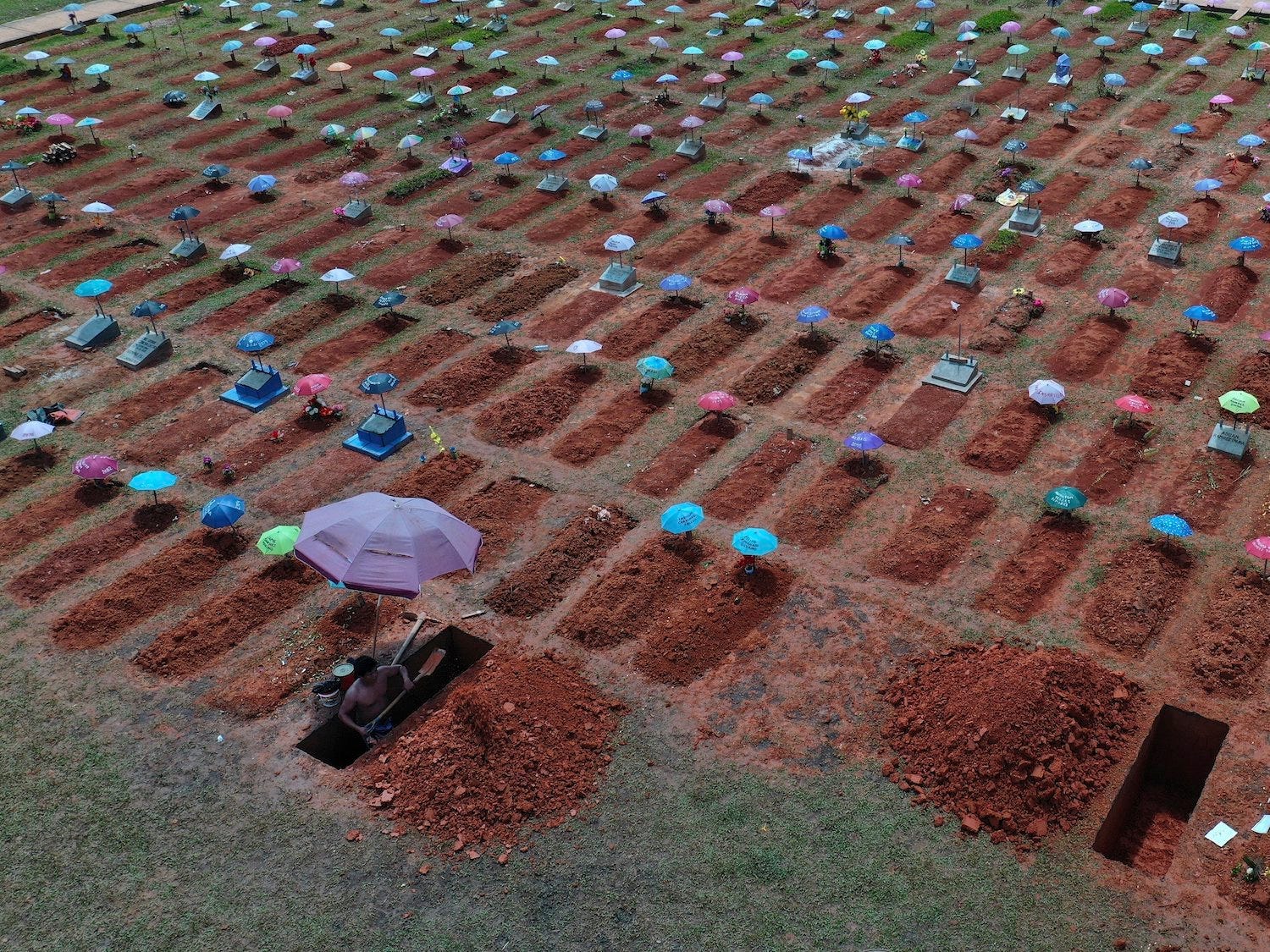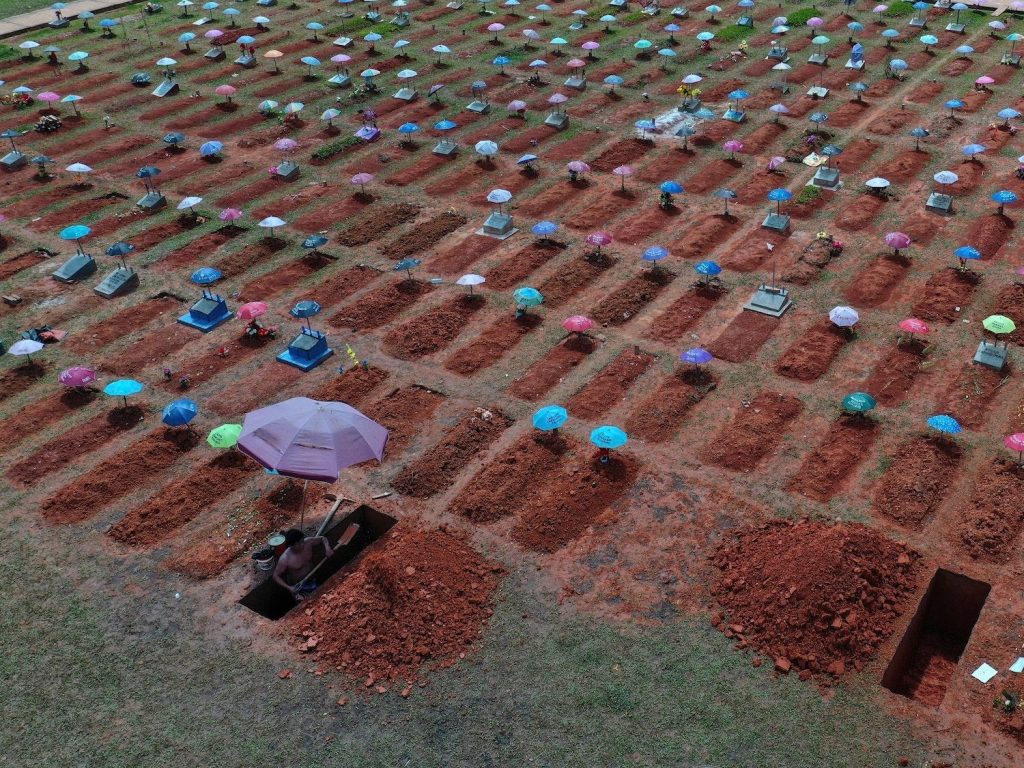
AP Photo/Rodrigo Abd
- Peru's COVID-19 death rate nearly tripled on Monday after it updated its definition for virus cases.
- The new figure puts the country's COVID-19 death per capita as the highest in the world.
- The previous estimate did not align with the number of excess deaths in the country, the country said.
- See more stories on Insider's business page.
The COVID-19 death rate in Peru nearly tripled after the government updated its definition for coronavirus-deaths to include "probable cases," the country said Monday.
The total coronavirus-related death toll for Peru now stands at 180,764, up from an estimated 69,342 deaths on Sunday, Reuters reported.
The rise came after Peru expanded its definition of deaths related to COVID-19, ABC News reported.
Peru's new definition for COVID-19 deaths includes "probable" cases, meaning it now includes deaths without a positive COVID-19 test and deaths "with an epidemiological link to a confirmed case," the BBC reported.
With the updated number of deaths, Peru's mortality rate per capita now stands at over 500 per 100,000 people out of a population of 32.6 million, Reuters reported.
This makes Peru the country with the highest mortality per capita in the world, Reuters reported.
The number of deaths recorded in Peru after the definition has been updated is now in line with observed excess deaths in the country, according to Reuters.
"A significant number of deaths were not classified as caused by COVID-19," Health Minister Oscar Ugarte said.
Excess deaths are a measure of how many more people died in a year compared to what was expected from looking at trends from previous years.
Dr. Gianluca Baio, a professor of statistics at University College London, told Insider: "The underlying reasoning that I could see is that by taking a very strict definition - only dying of COVID if you tested positive - numbers weren't tying up with the reality."
